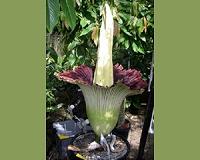 |
Washington DC (SPX) Apr 11, 2011 Sealants, like weather stripping, are what separates the inside from the outside of a building, byproviding a barrier that prevents water from seeping in, for example, or heat from leaking out. The challenge, says research chemist Christopher White of the National Institute of Standards and Technology (NIST) in Gaithersburg, Maryland, is predicting when they will fail. Current methods test sealants statically, by placing them outdoors for long periods of time, to measure their resistance to the elements. The problem, says White, is that under normal conditions, sealants are also affected by constant movement: the temperature-induced expansion and contraction of the different kinds ofmaterials they seal together-such as glass, in a window, and steel, in the window and building frame. "When you put sealant on a building, it is because the glass window and steel frame expand and contract at different rates with changes in temperature," he explains. "The sealant needs to be able to seal this gap, as it changes." This creates fatigue in the sealant, eventually causing it to crack and fail. Using simple materials that can largely be purchased from a hardware store-including PVC pipe, wood, steel supporting frames, and toilet flanges-White and his colleagues have developed the first instruments to test sealants under real-world conditions, while monitoring their displacement and load with sensors and tracking environmental conditions with a weather station. "This new device-which is very inexpensive-induces movement that is very similar to what a sealant would see in the actual application, in a building," he says. The designs of the two devices-one that puts sealants in tension and one that puts them in compression when cold-have been passed along to an industrial consortium of sealant manufacturers working with NIST. "Two companies have actually built and are using them for sealant testing," says White.
Share This Article With Planet Earth
Related Links American Institute of Physics Space Technology News - Applications and Research
 Can Plants Generate Magnetic Fields
Can Plants Generate Magnetic FieldsBerkeley CA (SPX) Apr 11, 2011 Searching for magnetic fields produced by plants may sound as wacky as trying to prove the existence of telekinesis or extrasensory perception, but physicists at the University of California, Berkeley, are seriously looking for biomagnetism in plants using some of the most sensitive magnetic detectors available. In an article that appeared this week in the Journal of Applied Physics, the U ... read more |
|
| The content herein, unless otherwise known to be public domain, are Copyright 1995-2010 - SpaceDaily. AFP and UPI Wire Stories are copyright Agence France-Presse and United Press International. ESA Portal Reports are copyright European Space Agency. All NASA sourced material is public domain. Additional copyrights may apply in whole or part to other bona fide parties. Advertising does not imply endorsement,agreement or approval of any opinions, statements or information provided by SpaceDaily on any Web page published or hosted by SpaceDaily. Privacy Statement |